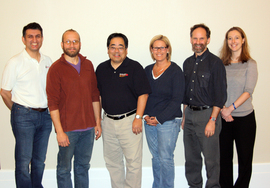SIRXS (SEIP IR Excess Survey) : looking for IR excesses around stars found within the Spitzer Enhanced Imaging Products (SEIP) source list.
Members of the SEIP Infrared Excess (SIRXS) team intend to isolate the Infrared Excess (IRXS) sources in the newly released Spitzer Enhanced Imaging Products catalog (SEIP). Although Spitzer’s original cryogenic mission acquired images of roughly 42 million point sources, most of these were incidental and never targeted for research. The SEIP archive has, therefore, recorded millions of never before studied objects that just happened to be in the same field of view as those objects specifically selected for research. This project intends to examine and cull all these data, isolating previously unknown IRXS candidates. There are three criteria: First, we will consider only those objects with signal to noise ratios (SNR) of at least 10 to 1, or ten sigma. Each source must satisfy this standard in all of the following five wavelengths: 3.6, 4.5, 5.8, 8 and 24 micrometers (μm). Second, this reduced list of roughly one million sources will be analyzed by spreadsheet, using color-color ratios to identify our infrared excess candidates. Third, images of each potential IRXS source will then be examined by a team member to eliminate any obvious faulty images or misidentified IRXS sources. We currently have no expectation of what proportion of the one million sources (from the initial culling) will remain on the final list, as this is the first work resulting in statistical estimates of such a probability for the Spitzer archive. In the final stage we will use color-magnitude diagrams to differentiate our list into categories based on type of IRXS source. Our hope is that this SIRXS catalog will become an important resource for future researchers.
Caltech, Pasadena, California
Phillips Academy, Andover, Massachusetts
Concord Academy, Concord, Massachusetts Lawrence Academy, Groton, Massachusetts Noble & Greenough School, Dedham, Massachusetts
Many NITARP alumni helped us out with reviewing the NITARP 2017 proposals! Scientists who helped include Chris Gelino, Marie Ygouf, Julian van Eyken, and Jessica Krick. Thanks to all!
Both of the 2014 NITARP teams have written proposals describing the work they will conduct in 2014. Check them out on the individual team pages!
Both NITARP 2014 teams submitted research proposals. Several NITARP alumni helped review them.
